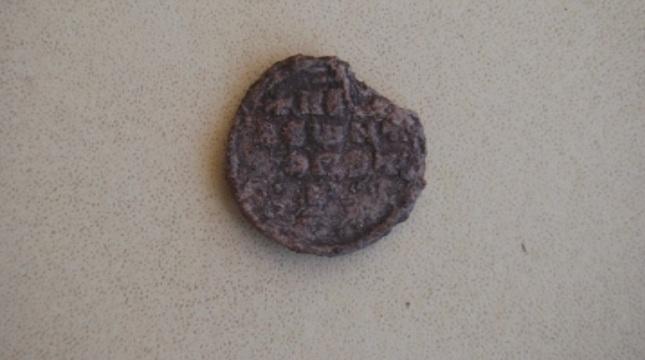Lead seal of a Byzantine commander was found by archaeologists in Bulgaria’s first capital Pliska (the capital of the First Bulgarian Kingdom from 681 to 893 AD). The seal was discovered in the foundations of a previously unknown palatial...

Lead seal of a Byzantine commander was found by archaeologists in Bulgaria’s first capital Pliska (the capital of the First Bulgarian Kingdom from 681 to 893 AD).
The seal was discovered in the foundations of a previously unknown palatial building, in close proximity to a circular arena built of stone.
The building resembles the late stone palaces in the medieval Pliska. So far, the archaeologists have explored 900 sq. m. from it and found a lot of similarities with Khan Krum’s Palace.
The finds include coins and several seals, one of which belonged to a Byzantine commander. One side of the seal depicts an image of an emperor, while the other has an inscription.
Andrei Aladzhov, from the Institute of Archaeology of the Bulgarian Academy of Sciences says that the seal likely belonged to Pisota Vardarii, because seals of this person were found in 7 or 8 different places in Pliska.
Pisota Vardarii is considered to have had intense correspondence with the Bulgarian rulers. His seals were found in the second Bulgarian capital Preslav from the times it was ruled by Tsar Simeon the Great.
 Тръмп с ултиматум: САЩ налагат строги мита на Русия след 50 дни, ако няма мир в Украйна
Тръмп с ултиматум: САЩ налагат строги мита на Русия след 50 дни, ако няма мир в Украйна